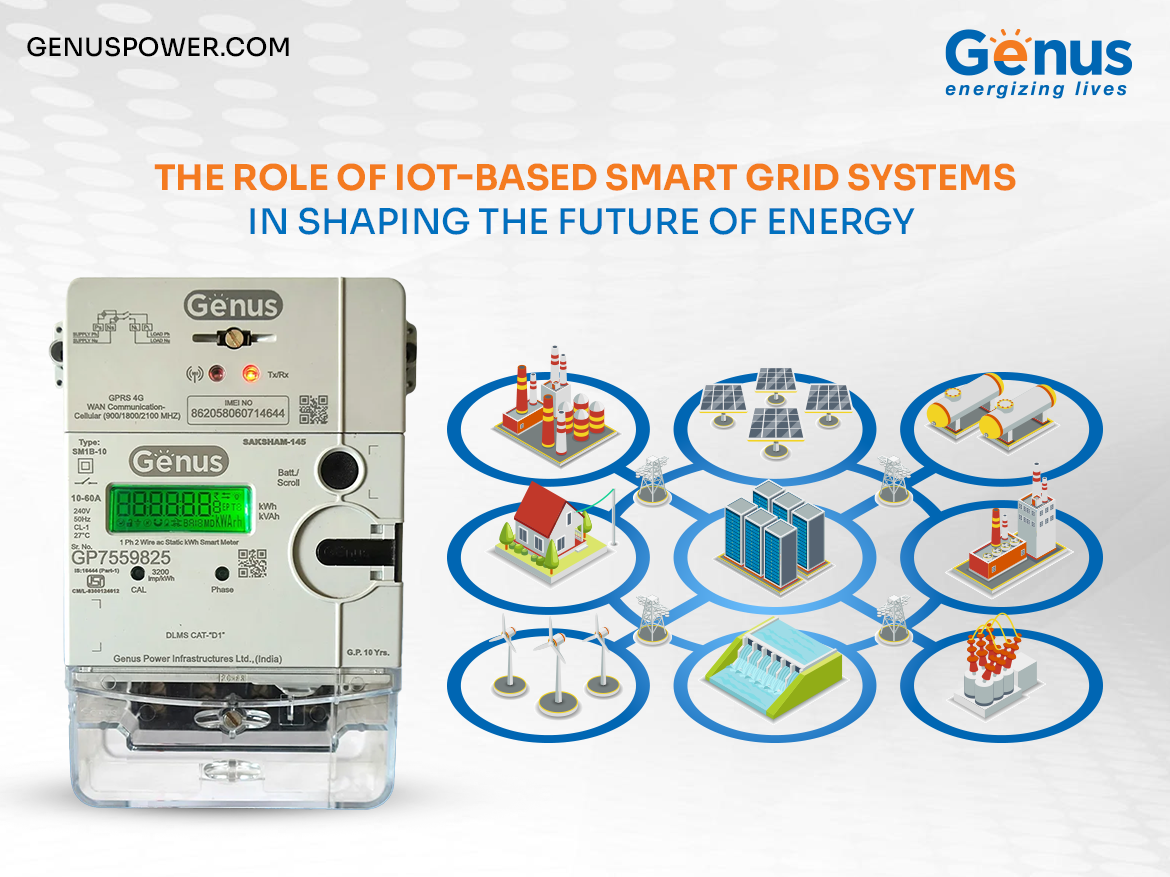
The world’s growing energy demands are creating new challenges in how we generate, distribute, and manage power. Traditional power grids, while having served their purpose for many years, are struggling to keep up with the dynamic energy needs of today’s connected world.
In the face of climate change, rising energy costs, and the push for sustainability, smart grids have emerged as the solution to modernize the energy sector. The integration of IoT (Internet of Things) within these grids is key to unlocking their full potential, enabling a smarter, greener, and more efficient energy future.
In this blog, we will explore the role of IoT-based smart grid systems in shaping the future of energy, addressing key challenges, and unveiling the immense benefits for industries and consumers alike.
A smart grid is an advanced electrical grid that uses digital technologies to collect data on energy usage, automate processes, and improve grid management. Unlike traditional power grids, which rely on basic infrastructure, smart grids incorporate IoT, smart meters, and communication technologies to enable two-way communication between utilities and consumers. These networks can monitor energy usage in real time, provide insights into consumption patterns, and allow for quick adjustments based on demand.
Smart grids are designed to improve the reliability, efficiency, and sustainability of power distribution. They help to minimize energy waste, reduce power outages, and enable the integration of renewable energy sources, making them essential to the future of energy management.
IoT plays a critical role in making smart grids smarter. By using IoT-enabled devices, smart meters, and communication devices, utilities can gather real-time data on energy consumption, voltage fluctuations, and other critical metrics. This data is then analyzed to predict usage patterns, detect potential issues, and optimize energy distribution.
IoT allows for automation at every stage of energy management, from generation and distribution to consumption. IoT-based smart grid systems enable proactive maintenance and quick responses to outages, improving the grid’s resilience. Additionally, the integration of IoT allows consumers to track and manage their energy usage more effectively, making it easier for them to reduce consumption and lower bills.
The integration of IoT into smart grids brings several advantages, both for utilities and consumers:
The Role of Smart Grids in the Transition to a Sustainable Future
As the global demand for energy continues to grow, the need for smarter, more sustainable solutions becomes critical. Smart grids, powered by IoT, offer a transformative approach to energy management that can address the challenges of the future. They enable the efficient integration of renewable energy, help reduce carbon emissions, and empower both utilities and consumers to make smarter, more sustainable energy decisions.
In the coming years, IoT-based smart grid systems are set to become an indispensable part of energy infrastructure worldwide, driving the shift towards a greener, more sustainable future.
As we move toward a more connected, digitalized world, the adoption of IoT-enabled smart grids will play a pivotal role in ensuring that energy is distributed efficiently, sustainably, and reliably. These grids are not just a technological upgrade; they are a necessary evolution in the way we produce, distribute, and consume energy.
At Genus Power, we are proud to contribute to the development of smart grid solutions and smart metering technologies that help shape a sustainable energy future. Together, we can unlock the full potential of IoT-enabled smart grids and create a world where energy is smarter, cleaner, and more efficient for everyone.